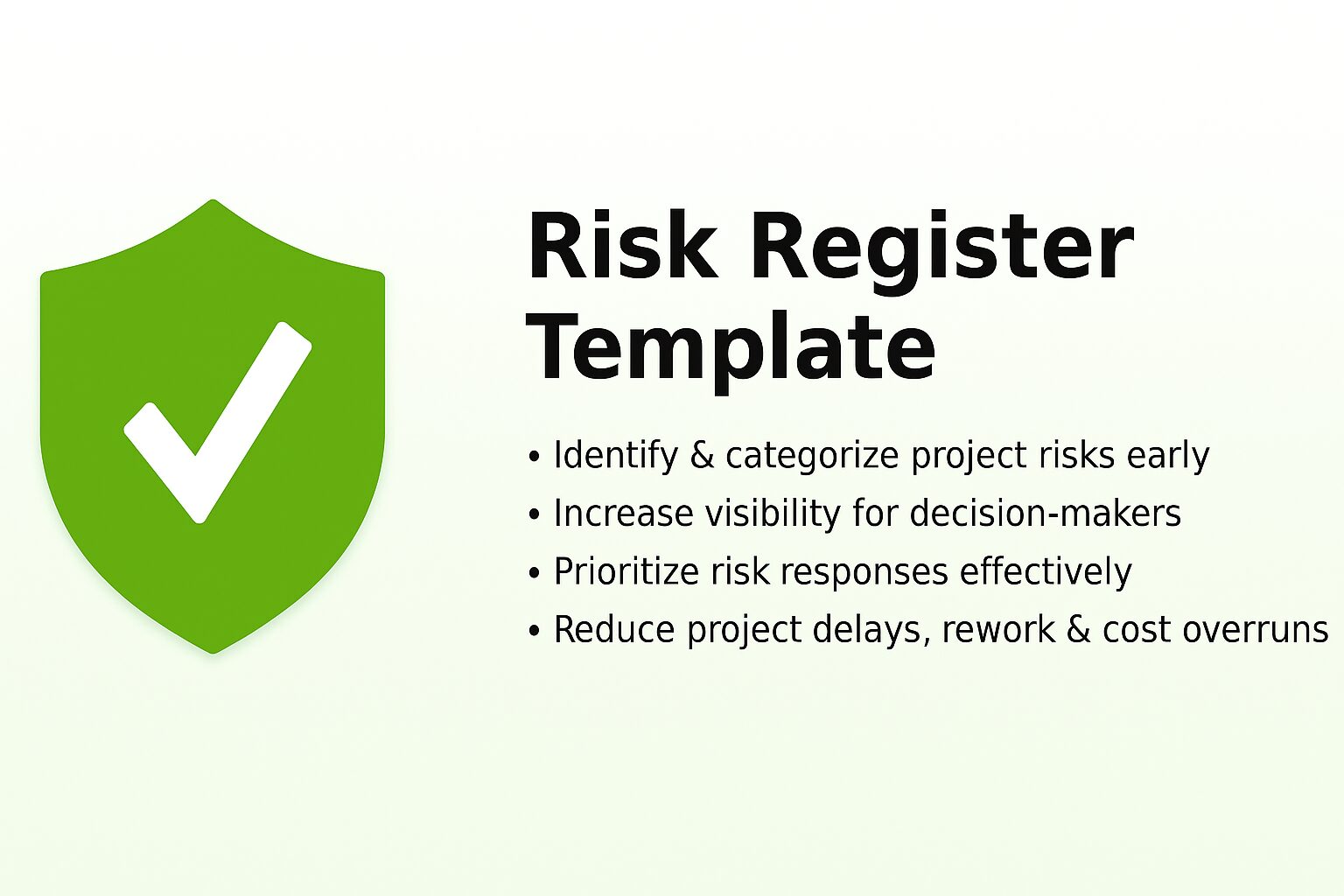
Risk Register Template (Professional Project Risk Tracking Tool)
Use this consulting-grade Risk Register to identify, evaluate, monitor, and mitigate project risks. Maintain visibility, accountability, and proactive risk controls across all project phases — and prevent issues before they occur.
Template Kit Includes Top 10 Core Templates
What Is a Risk Register?
A risk register is a structured tool used to identify, assess, prioritize, and proactively manage risks throughout the project lifecycle. It enables teams to prevent issues before they happen and ensures transparent communication with leadership and stakeholders.
- Maintains visibility of threats and vulnerabilities
- Supports proactive mitigation instead of reactive firefighting
- Strengthens governance, decision-making, and delivery confidence
- Reduces cost overruns, schedule slippage, and rework
When to Use a Risk Register
| Phase | Purpose |
|---|---|
| Initiation | Identify early unknowns and constraints |
| Planning | Develop mitigation plans and assign owners |
| Execution | Monitor and adjust responses in real-time |
| Closing | Capture lessons learned to improve the next project |
How to Use the Risk Register (Step-by-Step)
- Identify potential risks that may impact scope, schedule, cost, or quality.
- Assess risk probability and impact level.
- Assign clear risk ownership and accountability.
- Develop mitigation strategies and contingency plans.
- Track status and update regularly in status reporting cycles.
Common Mistakes to Avoid
- Not assigning owners — Risk without ownership is guaranteed to escalate.
- Not updating status — A stale register provides false confidence.
- No mitigation strategy — Hope is not a plan.
- No escalation triggers — Define when leadership must intervene.
More Tools & Resources for Project Managers
Free PM Calculators
Estimate timelines, ROI, budgets & resource needs.
Software Reviews & Comparisons
Choose the right project, HR, and accounting tools.
Project Management Job Board
Recruiters post jobs • PMs find roles globally.
PMWorld360 — The Go-To Source for Everything Project Management. Trusted Since 2016.
Template Download Options
Template Kit Includes Top 10 Core Templates

